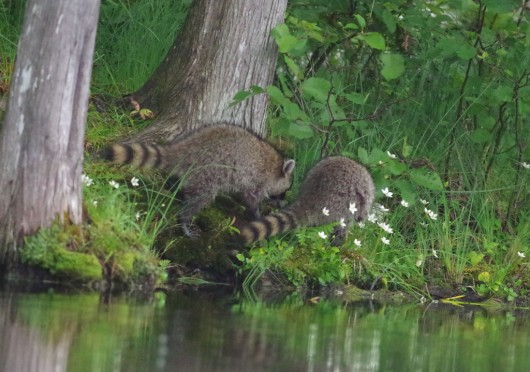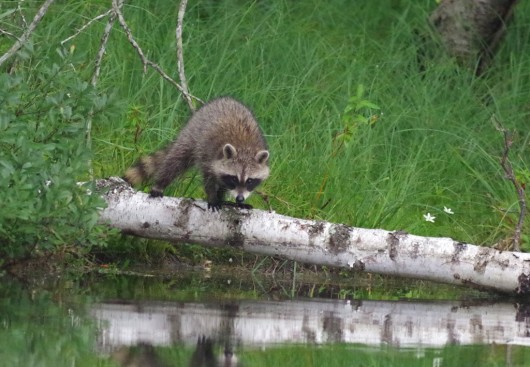
Mindy Talleck’s Duffers Revisited is a great felted slipper pattern available on Ravelry. Nearly 1300 Ravelers have knitted up a pair and posted about it on their Rav project page. The pattern is set up for basically all sized feet. Using a US size 11 needle, the knitting is quick–maybe 2 hours a slipper if you decide to take a wee nap instead of knit straight through. This top photo is how the slippers look before you felt them.
The green and gray yarn is Shepard’s Wool Worsted, by Stonehedge Fiber Mill. It was the fastest felter in the bunch. Next in the “I’m finished felting” race came the brown pair, in Rowan Creative Focus Worsted. And the slowest to felt? That was still an excellent felter, Lamb’s Pride Worsted, by Brown Sheep.
I decided to knit them all up and felt them together in my top-loading washing machine. I used the hottest water my hot water tank could muster and liquid Ivory Snow.


I followed Talleck’s pattern precisely, including all the heel decreases. In the tightest of the felted pairs, the heel is a bit overly turned in. But it’s still comfortable on the right-sized foot. And the material molds to the wearer.

The Rowan pair felted to the softest fabric of the three yarns. It also relaxed the most in the heel area and yielded the widest opening. My young neighbor who received these is studying ballet. I think she’s keen on them partly because they look a bit like a ballet slipper.
The tightest fabric was the Shepard’s wool. I was very happy that I moved up two needle sizes to bind off. Otherwise, I think feet would have had a very tough entry into these pair.


Duffers look very sweet embellished with buttons or buckles. But my sewing skills are a bit impaired and my button box didn’t yield the perfect buttons. Sewing a few felted balls on this pair brightened them up.
 I have it on good authority that Duffers allow little feet to slide amazingly well on hard-wood floors. So gift them with a warning. And definitely don’t wear them on non-carpeted stairs. If this old duffer makes a pair for herself, I believe she will apply some anti-skid “braking” product.
I have it on good authority that Duffers allow little feet to slide amazingly well on hard-wood floors. So gift them with a warning. And definitely don’t wear them on non-carpeted stairs. If this old duffer makes a pair for herself, I believe she will apply some anti-skid “braking” product.
 No bear. No elk. Three raccoons. Possibly a parent and two almost-grown kits. Two of the raccoons were crashing through the woods, tumbling and nipping at each other. The third, possibly the parent, wore the raccoon equivalent of a long-suffering look. They worked the shoreline, presumably looking for tasty nibbles. Worms, crayfish, clams. Yum.
No bear. No elk. Three raccoons. Possibly a parent and two almost-grown kits. Two of the raccoons were crashing through the woods, tumbling and nipping at each other. The third, possibly the parent, wore the raccoon equivalent of a long-suffering look. They worked the shoreline, presumably looking for tasty nibbles. Worms, crayfish, clams. Yum.














